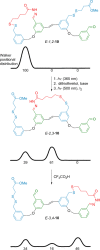Rise of the Molecular Machines
- PMID: 26219251
- PMCID: PMC4557038
- DOI: 10.1002/anie.201503375
Rise of the Molecular Machines
Keywords: molecular devices; molecular machines; molecular motors; molecular nanotechnology.
Figures











References
-
- Mislow K. Chemtracts: Org. Chem. 1989;2:151–174. Views on how to realize molecular machinery have changed considerably over the years.
-
- Balzani V, Credi A, Raymo FM, Stoddart JF. Angew. Chem. Int. Ed. 2000;39:3348–3391. - PubMed
-
- Angew. Chem. 2000;112:3484–3530.
-
- special issue Molecular MachinesAcc. Chem. Res200134, 409–522.
-
- Kinbara K, Aida T. Chem. Rev. 2005;105:1377–1400. - PubMed
MeSH terms
Substances
LinkOut - more resources
Full Text Sources
Other Literature Sources

